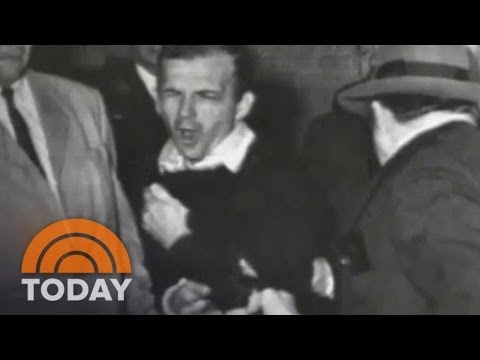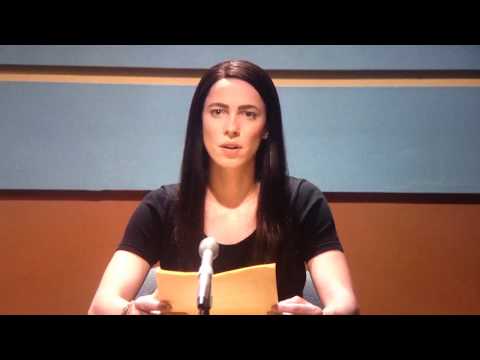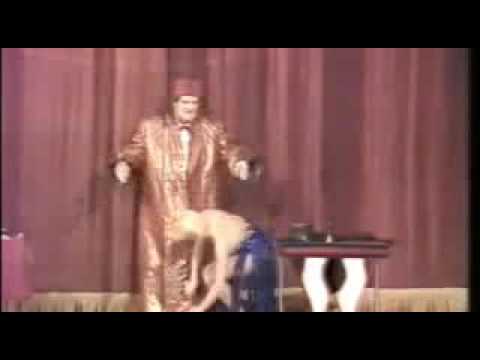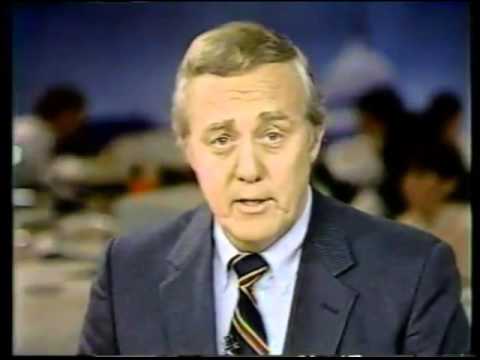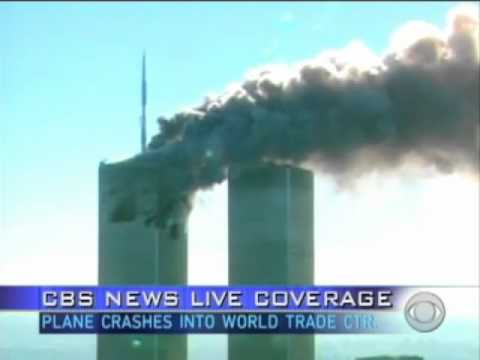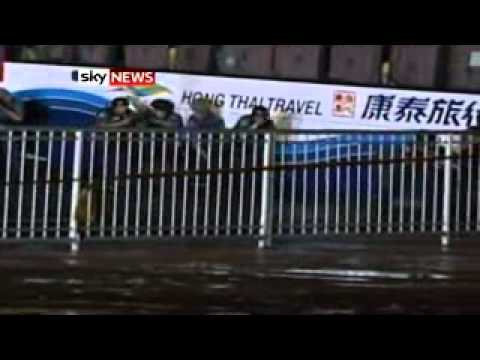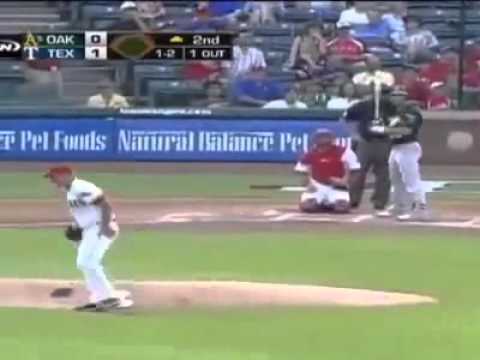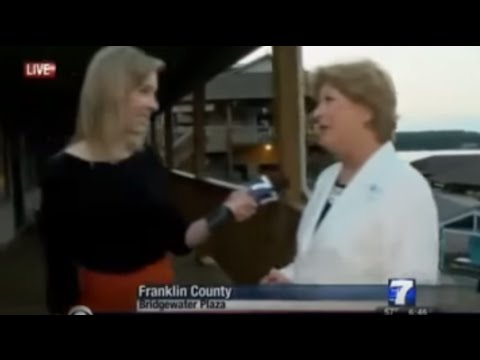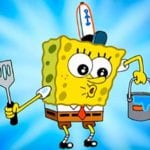To paraphrase their collective complaint: “Could you please stop replaying my loved one’s death over and over and over? [So and so] was in that tower when it collapsed. Must we see it on a loop forever?” Unfortunately, they must. The harsh takeaway is this: be careful not to die on live television. Following are more souls whose ends were broadcast in real-time.
10 Lee Harvey Oswald (November 24, 1963)
The first-ever live TV death was the culmination of the worst prisoner-handling protocol in U.S. history. Dallas had egg on its face. Leading up to President John F. Kennedy’s visit, a city already known for political extremism had become a bona fide hotbed of hate. Kennedy’s UN Ambassador, Adlai Stevenson, was shoved and spat on by protestors, and a widely circulated flyer declared JFK “Wanted for Treason.” Then Kennedy’s motorcade took a slow, winding route beneath scores of open windows. From one, former Marine marksman Lee Harvey Oswald scored two hits, including a fatal headshot. Oswald wasn’t hard to catch. He stashed the rifle and fled, with his absence soon arousing suspicion. He killed a cop who stopped him and was arrested in a movie theater after acting suspiciously at a nearby shop. Throughout the weekend, Dallas police paraded Oswald around the station, giving reporters ample access to the suspected assassin to earn some media goodwill toward a city that had just gone down in infamy. They let Oswald preen and pose and declare himself a patsy, fueling decades of conspiracy theories that defy both believability and ballistics science. When it was time to transfer him to another jail, the lax environment the police created came back to haunt them—in the basement of their own station, no less. Hiding amidst reporters, local nightclub owner Jack Ruby fired one shot at point-blank range into Oswald’s abdomen as the nation watched on live television.[1]
9 Christine Chubbuck (July 15, 1974)
Eleven years after Lee Harvey Oswald became the first person murdered on live television, a broadcast news reporter claimed an equally unfortunate distinction. Christine Chubbuck was a 29-year-old commentator for WXLT-TV in Sarasota, Florida. She frequently spoke to her family about depression, and they had good reason to listen: in 1970, Chubbuck attempted to overdose on drugs. She saw a psychiatrist, lamenting her inability to sustain romantic relationships. In fact, she was likely a virgin. In early July 1974, Chubbuck told news editor Rob Smith that she’d purchased a gun, joking about killing herself on air. Smith thought it merely a sick attempt at humor. The following week, Chubbuck opened a show called Suncoast Digest by calmly covering several national stories, then a shooting at a local restaurant. A corresponding film reel jammed. It wouldn’t run. Chubbuck shrugged and began her final monologue. “In keeping with the WXLT practice of presenting the most immediate and complete reports of local blood and guts news, TV 40 presents what is believed to be a television first. In living color, an exclusive coverage of an attempted suicide.” She then shot herself in the head. She died later that day. Eerily, the script Chubbuck had been reading from included the announcement of her own attempted suicide, suggesting that whoever read the copy reported her condition as “critical.” A film about Chubbuck’s life was made in 2016, including a reenactment of her suicide.[2]
8 Thomas Cooper (April 15, 1984)
The least surprising member of this list may be Thomas Cooper, a Welsh prop comic and magician. Large, lumbering, and typically clad in a signature red fez, the 6’3″ Cooper was an oafish presence onstage. Still, his skills were impressive enough to gain membership in The Magic Circle, a British organization that required a performance exam (and is real, even though it sounds totally made up). By the early 1980s, Cooper was nearing the end of his conjuring career. Though just 63, he easily looked a decade older thanks to excessive alcohol consumption and cigar smoking. His drinking was so bad, in fact, it had begun to adversely affect his act, relegating him to minor performances on cheesy TV variety shows. One of the bigger gigs he’d had in a while was April 15, 1984, when he appeared on Live from Her Majesty’s, broadcast from a prominent theatre in London. The live show regularly drew millions of viewers—all of whom saw Thomas Cooper die that day. Shortly into his act, Cooper suffered a massive heart attack and collapsed. With no one else on stage, the audience thought it was part of the routine and began laughing. Worse, Cooper started snorting and contorting as he struggled to breathe, which only made the audience laugh louder.[3]
7 The Challenger Shuttle Explosion (January 28, 1986)
On January 28, 1986, my first-grade teacher wheeled in a television set. We were about to watch the Space Shuttle Challenger transport a seven-person crew from Cape Canaveral in Florida into the heavens. Officially, the mission had two goals. One was deploying a communications satellite. More interesting was the crew’s intention to study Halley’s Comet. My father had recently shown me the once-every-76-year visitor through a telescope in the park. But the most noteworthy aspect of Challenger’s latest flight was Christa McAuliffe, a New Hampshire social studies teacher about to become the first schoolteacher in space. The humble educator had become a media darling in the launch’s runup. The Challenger took off and began its ascent. A minute into the flight, Commander Richard Scobee confirmed a direction: “Roger, go at throttle up.” Then the Challenger burst into flames as schoolchildren across the country looked on. Temperatures had recently dipped as low as 26°F (-3.3°C)—rarely heard of in Florida—and the cold had compromised something called an O-ring seal, making it impossible to fasten around a joint in the right solid rocket booster. Instead of throttling up, the Challenger blew up. While several crew members likely survived the spacecraft’s initial breakup, it hit the ocean at terminal velocity. They were all gone. For minutes, local news cameras remained affixed to a now-empty blue sky before anchors confirmed the grim news.[4]
6 Budd Dwyer (January 22, 1987)
The on-air suicide of disgraced public official Robert Budd Dwyer stands out for two reasons. First, it’s likely the goriest death ever broadcast live: Dwyer stuck a .357 Magnum Revolver in his mouth and pulled the trigger, collapsing into an eyes-affixed heap with blood gushing from his nostrils. This was after profusely apologizing to reporters gathered at a press conference and asking anyone who didn’t want to witness the act to leave—a literal trigger warning. The second is its influence on pop culture. Soundbites from the disturbing incident have been sampled by various macabre musicians, including Marilyn Manson, who used audio from the suicide in “Get Your Gunn”—the lead single on its first studio album. But ironically, Dwyer’s biggest impact on pop culture was being mistakenly overshadowed by another suicide. In 1995, a band named Filter released their biggest hit, “Hey Man, Nice Shot.” The song was written in 1991 and was entirely about Dwyer. But given the suicide of Kurt Cobain just a year before its release, “Hey Man, Nice Shot” was widely believed to describe the Nirvana singer’s self-inflicted demise. Were it not for its live broadcast, Dwyer’s death was nothing remarkable. A corrupt mid-level politician had been convicted of several felonies and faced decades in prison. Insisting on his innocence, he refused to resign until all legal avenues were exhausted and, just a day before sentencing, chose suicide over indefinite incarceration.[5]
5 Owen Hart (May 23, 1999)
Owen Hart was a professional entertainer with the then-World Wrestling Federation (WWF), now called the WWE after getting “acronym sued” by the World Wildlife Foundation. As if we can’t tell the difference between a greased-up steroid abuser and a panda bear. But I digress. Owen Hart was the less famous brother of Bret “The Hitman” Hart, half of the objectively awesome tag-team duo known as The Hart Foundation. Owen performed under his own name, as well as under his oh-so-intimidating stage name, The Blue Blazer. Still, Owen held various titles during his career and was a fan favorite. On May 23, 1999, Owen Hart was a headliner in a live Pay-per-View event, Over the Edge, at an arena in Kansas City. Hart’s entrance was to be particularly riveting: he would rappel in from the venue’s rafters. Tragically, Hart’s harness malfunctioned, and he fell nearly 80 feet (24 meters), landing chest-first on the top rope of the ring. The impact severed his aorta, and he bled to death in mere minutes. In the ensuing moments, a confused crowd hushes upon an intercom call for an ambulance, while TV broadcasters “break the fourth wall” by informing viewers that Hart’s fall was not part of the evening’s entertainment.[6]
4 United Airlines 175 (September 11. 2001)
For 17 long minutes, no one except a select few was sure. People both above and below the explosion in the World Trade Center’s North Tower figured it was a bomb. Many had been there eight years earlier when a bomb detonated in the complex’s underground parking garage. Within minutes, television networks around the world broke into scheduled programming, cameras fixated on the gigantic gash in the gigantic skyscraper. Anchorpersons struggled to make sense of the unfolding disaster. When word broke that it was, in fact, a plane crash, most reporters surmised the aircraft was a small, single-engine plane. The clear, calm skies ruled out a weather-related incident. Maybe an inexperienced pilot got confused… perhaps even suicidal. The small plane suppositions never really added up. Each WTC floor was an entire acre, and the two towers had enough concrete to build a sidewalk from New York City to Washington, D.C. They had their own zip code, for God’s sake. In other words, they were massive. And a propeller plane simply could not have done such devastating damage. At 9:03 am, reality struck. With untold millions watching on live TV, United Airlines Flight 175 slammed into the opposite tower. It had clearly made an intentional beeline for the building, bursting into an enormous fireball as it cut through floors 77-85. All 65 people (including five hijackers) were killed in a terrorizing instant that eradicated any notion of the first crash being accidental.[7]
3 Eight Hostages (August 23, 2010)
On August 23, 2010, a former Philippine National Police officer boarded a tourist bus in the capital city of Manila. Driving through the historic Rizal Park area, the bus was carrying 25 people, including 20 visitors from Hong Kong, a Chinese tour guide, and four Filipino guides. The 55-year-old Mendoza had an agenda: he believed himself unfairly dismissed from the police force and was seeking a means of pleading his case. Unfortunately for the tourists, Mendoza somehow reasoned that taking them all hostage would accomplish that goal. So he pulled out an assault rifle and a .45-caliber handgun and did exactly that. Soon, TV stations worldwide were preempting programs to carry the hostage situation live. A SWAT team showed up, then Mendoza’s brother attempted to help negotiate… but somehow managed to get himself arrested for weapons possession in the process. Mendoza fumed, vowing to begin executing hostages unless his brother was released. He wasn’t bluffing. Shortly after 7 pm—nine hours into the crisis—Mendoza killed tour guide Masa Tse. Several passengers rushed Mendoza, but he shot them dead too. He then began murdering the remaining hostages one by one, aiming at their heads. Then the driver escaped and mistakenly informed police that “everyone is dead.” As they stormed the vehicle, Mendoza began firing in bursts at passengers and police alike. The botched response is widely referenced as an example of how NOT to handle a hostage crisis.[8]
2 Shannon Stone (July 7, 2011)
Each year, there are nearly 2,500 Major League Baseball games played. And each game, the innocuous gesture performed by Texas Rangers outfielder Josh Hamilton occurs dozens of times. A foul ball ricocheted around the left-field corner and bounded toward Hamilton. A 39-year-old fan named Shannon Stone, wearing a blue Rangers cap and white Rangers shirt, pleaded with the outfielder to toss him a souvenir. Seeing that the man was decked out in Rangers gear and accompanied by his young son, Hamilton happily obliged. Hamilton’s toss was just a smidge off. Stone stretched out over a railing, caught the ball in his right hand… and tumbled 15 feet (4.5 meters) straight down, landing headfirst on a concrete walkway. The crowd gasped, and play was momentarily paused. When the TV broadcasters learned the reason for the delay, they found the tape and replayed it. “Hmmm… all that for a baseball?” one announcer mockingly says, unaware of how seriously Stone was injured. The other announcer chuckles. Not exactly a professional highlight for either of them. Stone briefly inquired about his six-year-old son, Cooper, who had witnessed the fall. He then fell unconscious, went into full cardiac arrest, and died before reaching a nearby hospital. Notably, Stone’s mom implored Hamilton and others to continue tossing souvenirs to fans, recognizing her son’s death as a freak accident.[9]
1 Alison Parker & Adam Ward (August 26, 2015)
On a late summer morning in 2015, on-air reporter Alison Parker, 24, and cameraman Adam Ward, 27, were muddling through an exceedingly banal segment: a live morning show interview with a local official discussing upcoming events. Vicki Gardner, executive director of the Chamber of Commerce in the sleepy town of Moneta, Virginia, was discussing goings-on in the town plaza to commemorate the 50th anniversary of the region’s Smith Mountain Lake reservoir. Not exactly riveting stuff for the Roanoke, VA, CBS affiliate’s audience, especially at 6:45 in the morning. Out of nowhere, a series of gunshots rang out. Parker and Gardner can be heard screaming. Ward’s camera falls to the ground, and for a brief instant, the lens lands on a middle-aged man with a handgun. That man was 41-year-old Vester Lee Flanagan II, a former reporter at the station, WDBJ-TV, who’d been fired two years earlier for disruptive conduct. Flanagan unleashed 15 shots, most at close range. Parker was shot in the head and chest, and Ward in the head and torso. Both died at the scene. Gardner was seriously injured but survived. Oddly, less than two hours later, Flanagan confessed… by fax. He then took to the road, switching cars before finally being spotted around noon. After a pursuit of just two miles, his car swerved off the road. He was found inside with self-inflicted gunshot wounds and died shortly after that.[10] Read More: Twitter Website
